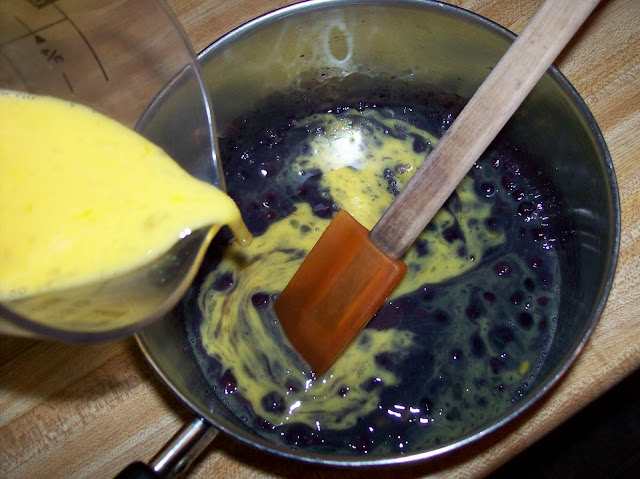Gluten-Free Gourmet
 |
| Squash Cooking |
I like to use a large knife and mallet to cut the squash in half; then I scrape out the pulp and seeds (the chickens love them). Next, place the squash and/or sweet potatoes in a pan, skin side down, in about an inch of water. Heat to boiling and simmer for 20-30 minutes.
 |
| Scraping Squash |
When the squash pieces are soft, dip them out of the pan. After they cool, use a spoon to scrape the flesh out of the skin. It should be about 3 cups, ready to use in your next cheesecake. We like to do ours the day before so it’s always ready in the fridge. This fall we’ve been enjoying our own garden squash in the cheesecake—what a flavor!















































